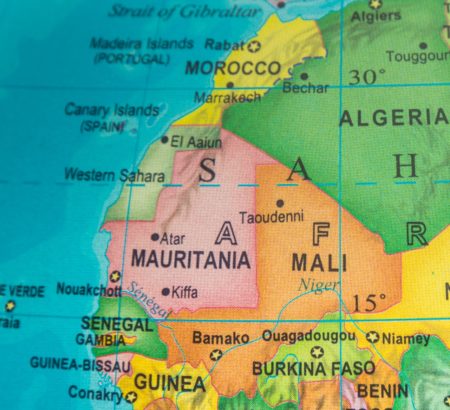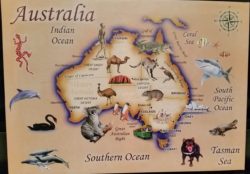The stories we read as children stay with us all our lives. Where deserts meet the sea, and your chances of survival are remote, shipwrecks bring terror. I remember enthralling stories that took me into the mystical world of elephants, learning how they deal with death. Wildlife who survive the scorching heat of deserts by day, and avoid the freezing cold of night enthrall us.
It is a sad event if, during their travels, an elephant family chances upon a long dead friend. They may spend several hours caressing, feeling, and smelling the bones, now bleached by the African sun. Sometimes, they pick up the bones and carry them away, to disperse them into different places. What memories do they store away about their lost companion? What stories stay with those elephants, as they “read” the bones?
Our story Tahj and the Dragon’s Gold is set against a background of shipwrecks off the coast of Western Australia, around Kabarri. It’s a rollicking adventure from which we escaped, unharmed. Using dragon magic and having a magic red helicopter, we got safely home – to tell other stories later.
Nevertheless, behind this formidable local coastline of reefs and high cliffs, there are deserts stretching for thousands of miles. Beyond that, treacherous red sand dunes up to 200km long and between 10 and 50 meters high. Or stark white sands where no footsteps can be found by morning.
They Sailed For Senegal
When I was about 12 years old, I read the book “They Sailed for Senegal.” It tells a shocking and tragic story of a shipwreck. Of drownings, starvation, death from thirst in the desert, and other human perils when a sea voyage goes horribly wrong. Of trying to survive on shore. Or using a raft built from the wreck of the French frigate, Medusa, and dying at sea.
More than 60 years on, I have never forgotten it. Some of the more specific parts of it, in particular, I remember vividly. When I was writing the crab series recently, I was especially mindful of that book. Shipwreck survivors who ate the land crabs frequenting the beach suffered terrible agonies afterwards, though whether it was from the crabs or not, I am not sure.
Google Earth makes the cause of their tribulations very plain. Their voyage would have been quite uneventful, had they followed the usual sightings. Their departure point was Ile d’aix , in the Bay of Biscay, which today is a tourist destination, just a 20 minute ferry ride from the mainland of France.
Sailing in clear view of the Sahara Desert
They sailed well within sight of the Peak of Teneriffe – in the Canary Islands – from whence my little Ulla Bird’s great great grandparents many times over first were taken.
The passengers and crew sighted Cape Bojadar which lies very close to the Tropic of Cancer, and indeed saw the Western Sahara desert itself.
They felt themselves well on the way to a safe arrival at St. Louis, in Senegal, not too far north of Dakar.
However, the history of the Picard family in this tragedy is well recorded. Their vicissitudes with the Moors as well as the deserts themselves are horrific reading.
It is a story of ineptitude and vanity which brought the flotilla of four ships undone and and many lives lost.
Crossing the Equator, crew and passengers celebrated traditional ceremonies for first time sailors. Almost immediately, experienced sailors were trying to persuade the Medusa’s Captain to sail 20 kms due West to avoid the looming danger of the Arguin sand banks.

Even when the “Echo” tried to warn them, and then sailed away, leaving them to their fate, the Captain remained obdurate.
Having been on board “bark Europa” and hearing the thunderous roar of breakers too close for comfort, it’s not hard to imagine their fate. In our case, we turned about and headed directly for Africa, until we were well clear of the treacherous West Australian coast.
Once shipwrecked on the Arguin Bank, there was little to comfort the crew and passengers with hopes of survival. The Arguin Bank is a naught but islands of sand, swirling in the ocean currents and forever changing their shape. For those who made it to land, they were confronted with the worst of deserts: the Western Sahara which came right down to the sea.
Is anything more dire than the deaths deserts demand?
For the poor wretches cast to their fate on a raft constructed from the wreckage of the Medusa, nothing but horror awaited them on the desert ocean. Including cannibalism.
Overall, the fate of 350 souls on board the Medusa suggests the snakes of her hair would have been a blessing, had they brought a swift death to those who did perish.
JEAN LOUIS THÉODORE GÉRICAULT_- La Balsa de la Medusa (Museo_del_Louvre,_1818-19) (Public Domain)
Notwithstanding that my memories remain quite vivid, I bought a copy from the UK. Published in 1938, it will be a fine addition to my antique library.
Politically, the history of the African Continent is bleak. It’s not encouraging or uplifting reading for children of 12, unless it is well supervised and thoroughly put into context for them. Indeed, even in my early 20’s, Robert Ruark’s “Something of Value” about the Mau Mau uprisings in Kenya shocked and distressed me a great deal.
“think of the children”
Further south lies the Skeleton Coast, aptly named for the great number of ships cast upon it, and the terrible human deaths that follow. Its heavily guarded diamonds, and searing desert of dunes that meet the sea, have spawned more than one or two epic stories of greed, lust, and death. At the same time, I read those, too.
Fortunately, my mother thought reading is a good thing, although I am not sure she always approved of my choice of topic. I remember us discussing the unlikely (intended) sex scenes in Geoffrey Jenkin’s “A Twist of Sand” where the Skeleton Coast brought the story to a somewhat prosaic end. Mum loved Clive Cussler’s adventure novels, and often recommended them to me. As yet, I have not taken up the challenge.
What’s on the menu for young readers of Stories My Nana Tells?
In spite of these quite disturbing choices for myself, from a young age, I have other memories secreted away.
Memories of elephants threading their way through those same sand dunes on the Skeleton Coast.
With calves at foot.
I know of tiny desert creatures surviving on drops of water left at night by a rolling sea fog. In the morning, the footprints of a myriad of busy night creatures pockmark the windswept sands.
No where else on earth are the skies so clear, and the stars as brilliant, unless it’s in the depths of the Australian outback.
Flamingos, pink and numbering in the thousands, feast on tiny crustaceans thriving in a high brine solution. It’s these unique attributes which keep the flamingos in the pink.
So, what will be the next story from Stories My Nana Tells? We are going to the Skeleton Coast. We will explore the amazing deserts of Namibia. Let’s learn about the wildlife surviving a landscape more like the planet Mars or the Moon, than most of the Earth.
Why? Because the stories we read as children stay with us all our lives. These are the stories I want my grandchildren to remember.
Don’t miss out! Make sure you are on our update list for the new stories of 2018. Just click the image









Leave a Reply